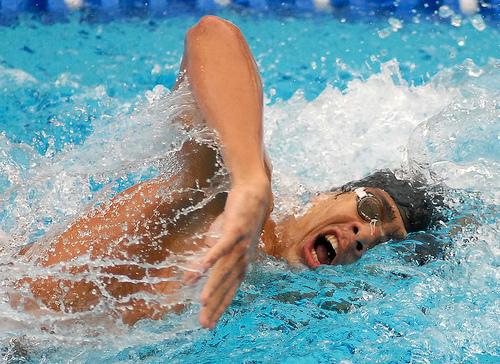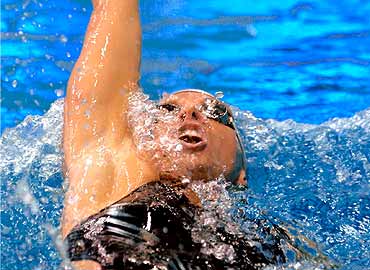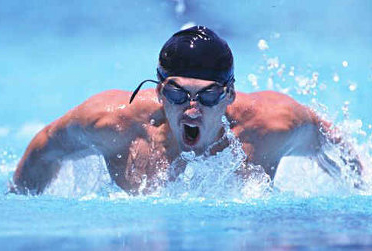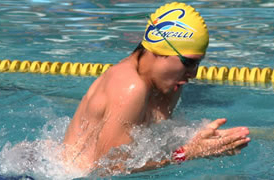Though there are numerous ways to move yourself around in the water, there are technically four competitive strokes: freestyle, backstroke, butterfly and breaststroke. Below we'll go into a bit of detail about each one.
* Does you child or teen want to get involved with swimming? Learn more about our summer camp swimming lessons!
Freestyle

Unlike the other three strokes, freestyle is not actually a regulated stroke, which means that swimmers can use whatever stroke they like best. However, freestyle has become a synonym of "front crawl" which, as the fastest swimming stroke, is used by practically all swimmers for the freestyle events.
The freestyle is one of the two "long axis" strokes, which means that the body pivots around the long axis running from head to foot, which makes the hips and body weight shift from side to side.
The freestyle swimming stroke incorporates alternating arm movements, which are complemented by the leg movement known as a "flutter kick". This means that the legs also alternate, but faster... therefore there are more kicks than arm movements. The arms provide most of the power and forward motion in this stroke, whereas the legs maintain stability.
Backstroke

You can pretty much think of the backstroke as an upside-down version of the freestyle. It's also a "long axis" stroke involving alternating arm movements which provide the bulk of the movement and the flutter kick for stability. The only real difference is that it's a stroke swum on the back.
The main advantage of the backstroke is the easy breathing, as your face is always out of the water. Likewise, a disadvantage to this swimming stroke is that you can't see where you're going.
Butterfly

While the previous two strokes involve alternating arm and leg movements, the butterfly, often referred to simply as the "fly", has simultaneous movements. The synchronous arm movement followed by the synchronous leg movement (a "dolphin kick") creates a wave-like body movement. As the chest goes up, the hips go down; as the chest goes down, the hips go up.
In order to be the powerful swimming stroke it's meant to be, the butterfly requires extremely good technique and impeccable timing. It's generally considered the most difficult stroke but, when done correctly, the butterfly exudes pure power. In fact, the lunge forward is much faster than the freestyle (the fastest stroke), but the time between each lunch slows the overall time down.
Breaststroke

The breaststroke, which is at times referred to as the "frog kick" due to the distinctive kicking movements, is the third official swimming stroke swum on the chest.
While it's the slowest of the four strokes, it's also one of the more difficult strokes when done correctly because of the leg strength and endurance it requires.
Unlike the freestyle and backstroke, the body weight doesn't shift side to side. Instead, the torso remains stable and the arms move simultaneously, instead of alternating like with the freestyle and backstroke.







